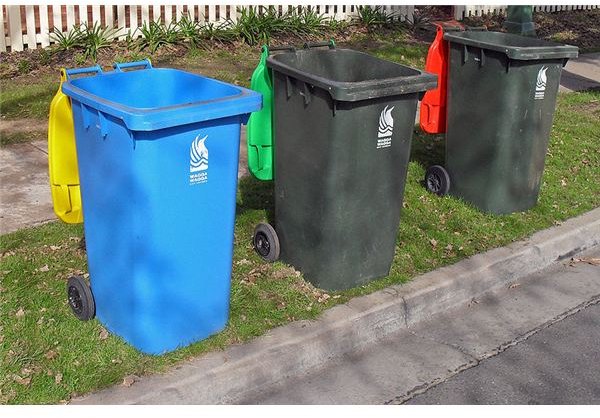Build a Home Recycling Center With 5 Easy Steps
Recycling is one of the most important and significant ways people can help the environment. Recycling saves energy, reduces the amount of waste sent to landfills and prevents hazardous materials from contaminating our soil and water. Almost all household trash can be recycled, including paper, aluminum, steel, plastics, batteries, glass, cell phones, light bulbs, and electronics. Building a home recycling center not only provides a convenient location in your house to collect and sort your recyclables, but also serves as a reminder of the importance of recycling and the impact each home can have on the environment.
1. Contact Your Local Recycling Center
Before you build your home recycling center, it is important to contact your local recycling center or sanitations company to obtain recycling bins, make arrangements for curbside pick up, or find out where to drop off your recyclables. You will want to get a detailed list of exactly which items your community recycles, how to sort your recyclables, any specific instructions, such as removing caps and bundling newspapers, and the pick up and drop off dates for different items.
2. Choose Your Location
Finding a convenient location for your home recycling center is crucial because it will make it easier for recycling to simply become a habit for everyone in your household. You may need two spaces, one within your house to collect the recyclables and then a second space to sort and store these items. As the kitchen generally creates the most trash and, therefore, the most items to recycle, try to create a space either under the sink, in a cupboard, in a nearby laundry room, or in the pantry for collection.
Your second space, for sorting and storage, may need to be a little larger, such as in the garage, basement or a storage shed. This area needs to have space for your large collection bins as well as enough space to store larger recyclable items, such as car batteries and electronics that will need to be transported to a local recycling center. You can also post any special instructions and the recycling pick up date. Keep in mind that the less often your recyclables are picked up, the more room you need to have to store them.
Continue to Page 2 for steps 3, 4 and 5 for building your home recycling center.
3. Make Your Storage Bins
The number of recycling bins you need depends primarily on how many different types of materials you plan to recycle. You will need these bins to collect and store all the recycled items from inside your house. Make one bin for each different type of material you collect, such as plastic, glass, paper, etc. Many communities now provide large, brightly colored, plastic bins for curbside recycling pick up. If you need to transport your recyclables to a recycling center, it may be a good idea to keep your storage bins in the garage. To save on space, you can mount hooks near your containers to hang bags for storing light materials such as cans and plastic bottles. You will also need to color, label or put pictures on all your recycling containers. This ensures that everyone in your household knows what can be recycled, where it goes and is able participate in the sorting process.
4. Add Bins Around Your House
To make recycling as convenient and easy as possible for every member of your house, put a recycling bin next to each trash container in the house. In the kitchen you will need one bin for compostable and food waste, and a separate bin for other recyclable items. Keep in mind that with kitchen items, it is important to wash and dry anything that contained food products. Each bathroom will need a recycling bin, as well as your home office and garage. One way to keep it simple is by having two small, different colored bins in each room. Your home recycling center is complete!
5. Always Reduce and Reuse
Now that you have the recycling part covered, it is important to not forget to reduce and reuse. This is a great time to educate yourself and your household on exactly what is in your trash and ways to reduce it. Instead of throwing out old items, figure out ways to repurpose them into something new, fun and useful. When out shopping it is essential consider the products you are buying. Try to choose items that have little to no packaging, or have packaging made from recycled materials. Purchase items in bulk whenever possible. Be mindful of purchasing recycled-content products and items made from post-consumer content. Before you buy, ask yourself if you really need this new item or if there is something else you could reuse.
Once you build a home recycling center, this can be just beginning for you and your household to start learning and practicing exactly what green living is all about.
Resources
United State Environmental Protection Agency – Recycling In Your Home:
https://www.epa.gov/osw/wycd/home.htm#reduction
Keep America Beautiful: Recycling - https://www.kab.org/site/PageServer?pagename=recycling
Image Courtesy of: WikiMedia Commons - Bidgee
